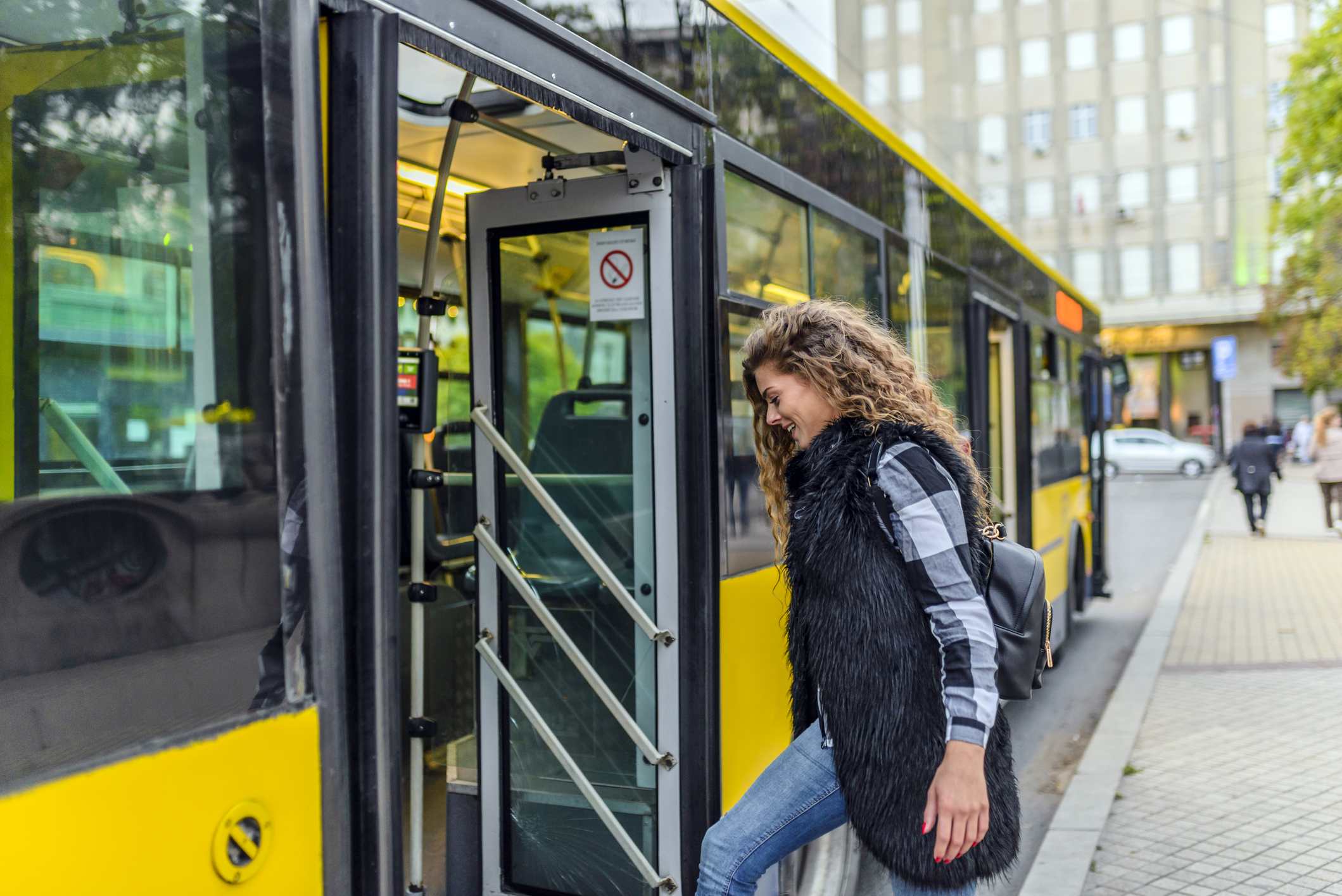
Americans took 2.5 billion trips on public transportation in the third quarter of 2018, according to a report by the American Public Transportation Association (APTA). Commuter rail ridership increased, with more than half of commuter rail systems showing ridership growth. Bus ridership in communities with populations below 100,000 increased by 1.7 percent and demand response increased by 4.6 percent. Compared to public transit ridership for the third quarter in 2017, there was a 1.75 percent decrease in total ridership.
“Public transit systems are committed to providing safe and reliable service to the millions of people who depend on public transportation,” APTA President and CEO Paul P. Skoutelas said. “In order to increase mobility options, public transit systems are increasing frequency, improving routing, experimenting with fare changes, and engaging in partnerships to offer the best service possible to meet customers’ needs.”
Blacksburg Transit (Blacksburg, Virginia) is on track to record ridership as they made changes in their bus service by increasing the frequency on two routes, along with adding two new routes. Flagstaff, Arizona ridership increased by 6.5 percent after it put new articulated buses into service, enabling more people to ride.
Sound Transit (Seattle) added two additional weekday commuter rail trips between Tacoma and Seattle in 2017 and continued to see ridership gains through the third quarter of 2018 with ridership up 2.5 percent compared to the previous year. In August 2018, Denton County Transportation Authority (Lewisville, Texas) launched its A-train free fare zones and has seen ridership increases in those locations.
The Rapid (Grand Rapids, Michigan) relaunched Route 19, its lowest ridership route, in partnership with the City of Grand Rapids and Spectrum Health. This partnership re-established Route 19 as a fare-free route, improved its routing, increased peak service frequency and is now a main commuter option for Spectrum Health. The Rapid quadrupled the service on Route 19 and ridership went from roughly 50 rides a day to more than 1,100 rides per day.
In July 2018, Riverside Transit Agency (Riverside, California) saw a 2 percent increase in ridership; in August, RTA’s ridership climbed 3 percent. One of the reasons for this jump in ridership was a promotional $0.25 fare that led to gains in youth ridership. During the promotion, which was between June 1 and September 3, RTA buses carried a record 190,000 youth trips. That’s 10 percent higher than the same 3-month period last year.
To see the complete APTA ridership report go to: https://www.apta.com/resources/statistics/Documents/Ridership/2018-Q3-Ridership-APTA.pdf
2018 Third Quarter Ridership Breakdown
Nationally, commuter rail ridership increased by 0.7 percent with 18 out of 31 public transit systems showing increases. Commuter rail systems in Orlando (70 percent); San Rafael, California; and Stockton, California saw double digit increases in the third quarter of 2018.
Ridership in the following cities also saw increases in the third quarter:
- Pompano Beach, Florida (8.2 percent)
- Nashville (7.3 percent)
- Oakland, California (6.8 percent)
- Denver (6.4 percent)
- Harrisburg-Philadelphia, Pennsylvania (6.2 percent)
- Salt Lake City (5.5 percent)
- Newark (4.4 percent)
- Austin, Texas (4.4 percent)
- Anchorage, Alaska (4.0 percent)
- New York, MTA Long Island Rail Road (2.9 percent)
- Seattle – Sound Transit (2.5 percent)
- San Carlos, California (2.3 percent)
- Los Angeles (2.0 percent)
- Oceanside, California (1.3 percent)
- Baltimore (0.7 percent)
Bus ridership in communities with populations less than 100,000 increased by 1.74 percent. Some examples of these communities are Blacksburg, Virginia (27.1 percent) Ithaca, New York (7.8 percent), and Flagstaff, Arizona (6.5 percent).
Overall bus ridership decreased nationally by 1.9 percent. In the third quarter, the following cities showed the highest ridership increases at the nation’s large bus agencies:
- Houston (9.2 percent)
- Columbus, Ohio (6.0 percent)
- Oakland, California (4.7 percent)
- Pittsburgh (3.8 percent)
- Boston (3.4 percent)
- Las Vegas (2.4 percent)
- Fort Lauderdale (1.5 percent)
- Phoenix (0.6 percent)
Heavy rail (subways and elevated trains) ridership decreased nationally by 2.4 percent. However, heavy rail in the following cities showed ridership increases for the third quarter of 2018:
- Philadelphia (7.8 percent)
- San Juan, Puerto Rico (6.4 percent)
- Miami (5.9 percent)
- Atlanta (1.4 percent)
- Lindenwold, New Jersey (0.1 percent)
Light rail (modern streetcars, trolleys, and heritage trolleys) ridership increased in 8 out of 27 transit systems while overall ridership decreased by 3.6 percent. Systems that showed double digit increases were in the following cities:
- Charlotte, North Carolina (55.3 percent)
- Seattle – King County Metro (21.6 percent)
- Hampton, Virginia (11.5 percent)
- Houston, Texas (10.8 percent)
Light rail ridership in the following cities also saw increases during the third quarter of 2018:
- Minneapolis, Minnesota (6.3 percent)
- Seattle, WA-Sound Transit (6.2 percent)
- Newark, New Jersey (1.6 percent)
- San Jose, California (0.4 percent)
Trolleybus ridership decreased by 3.1 percent in the third quarter of 2018.
This press release was originally published on the APTA website. You can view it here.
